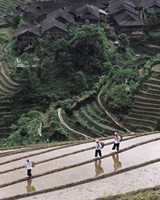August 30, 2018
ALFP e-magazine issue 2 Climate Change
Back IssuesOverview
Guest Editor: Marco Kusumawijaya (Director, Rujak Center for Urban Studies / ALFP 2009 Fellow)
Asia will increasingly contribute the most to climate change because of two factors: Its huge population and its steady economic growth. Many Asian countries have growth rates that are almost always double or more those of the United States, Western Europe and Japan. Hundreds of millions of new members of the middle class are emerging as aspiring consumers but the cost is rapid resource depletion and damage to the environment. The Asian population will also be the largest to be impacted by climate change. Its coastal population, which is the most vulnerable to rising sea levels, will increase by some 300 million to 1.6 billion in 2025. Many questions are being raised; the answers are only tentative. Given the diversity of Asia, what will happen in terms of specific quantity and mechanisms? What strategies that are specifically Asian are being or can best be devised in order to simultaneously grow and conserve the environment, reduce CO2 emissions and attain a sustainable economy? What social and political impacts and responses will there be? How will they be related to democracy, which is at different levels around Asia? How will communities and nations prepare for loss and disaster? Are there examples in specific countries and regions? These are the some of the themes that this issue of the ALFP e-magazine would like to have in its pages.
-

Changing Climate Poses a Grave Threat to Indian Farmers
Jaideep Hardikar (India)
Independent Journalist / ALFP 2015 Fellow
-

Can Southeast Asia Respond to Climate Effect?
Saroj Srisai (Thailand)
Head, Environment Division, ASEAN Secretariat / ALFP 2017 Fellow
-

Fire, Water, and Soil: The Simple Life as Resistance and Renewal
Kamata Yoji (Japan)
Representative, Soranoie Living and Learning Center of Cosmos / ALFP 2006 Fellow



